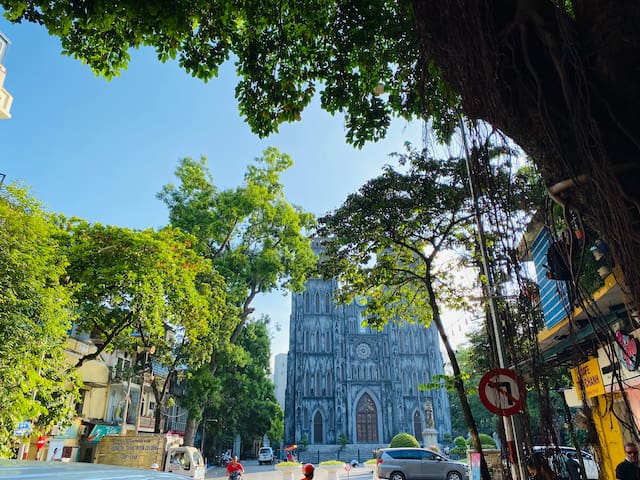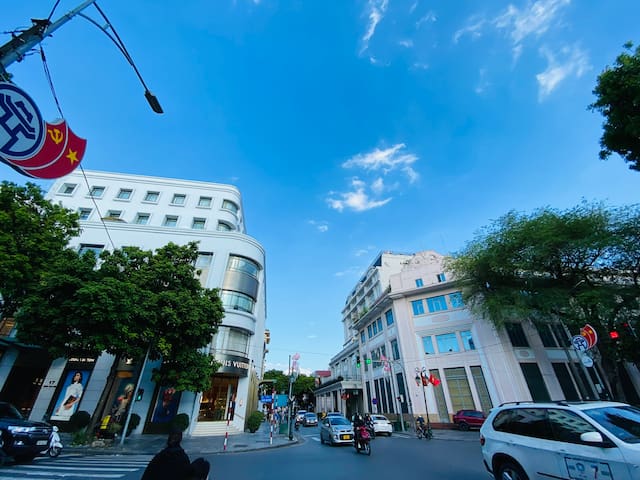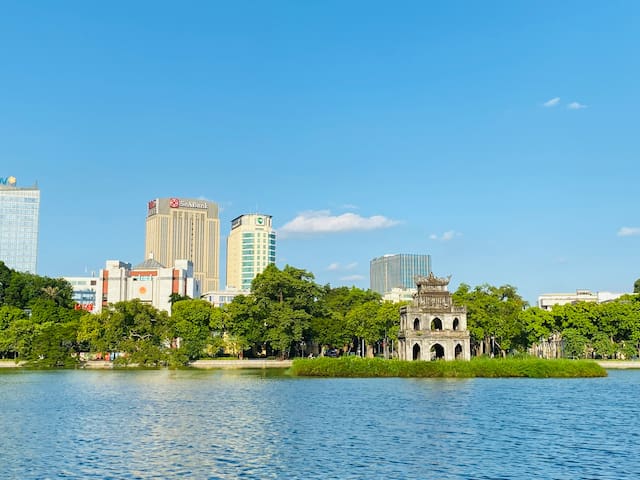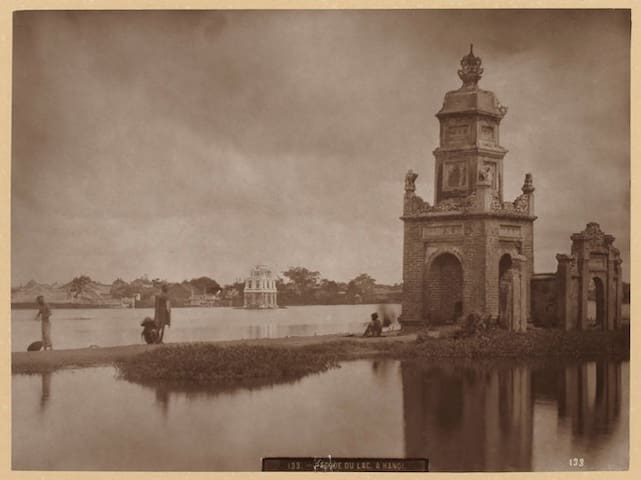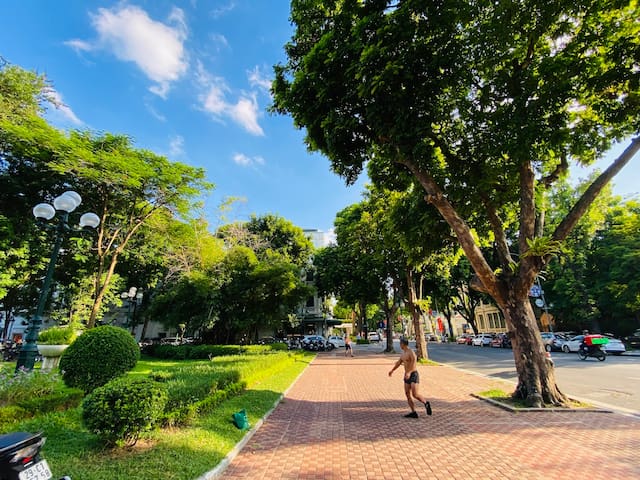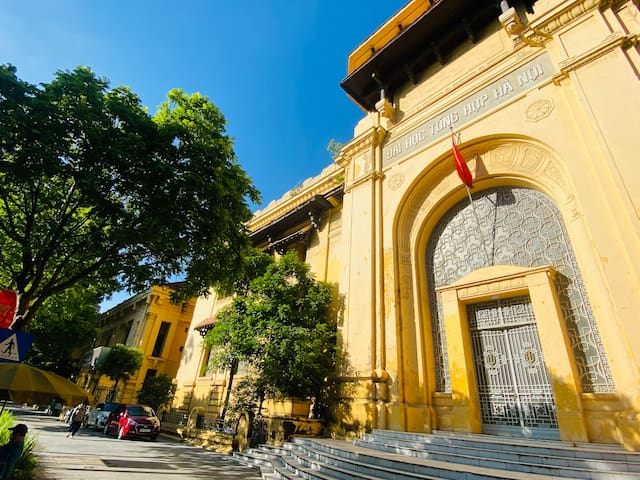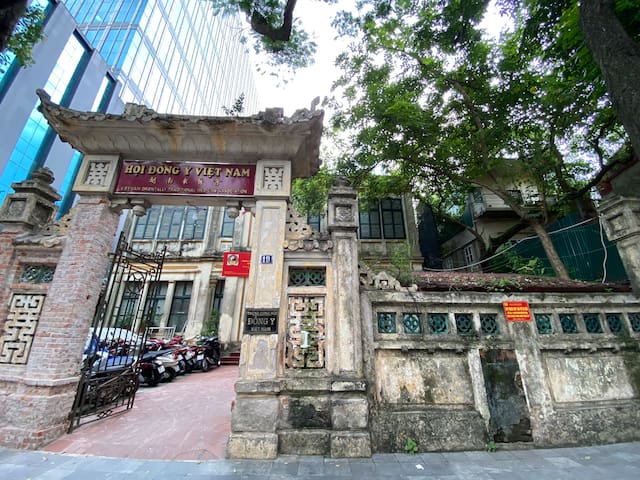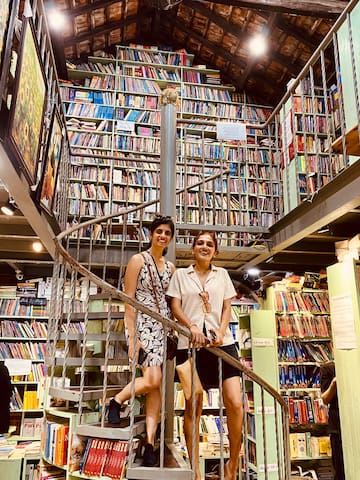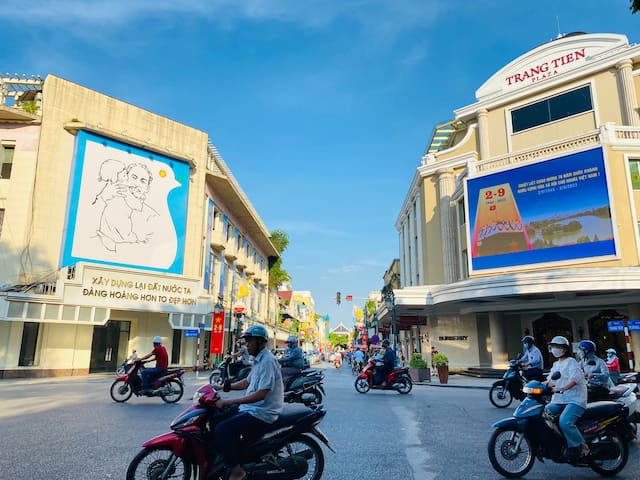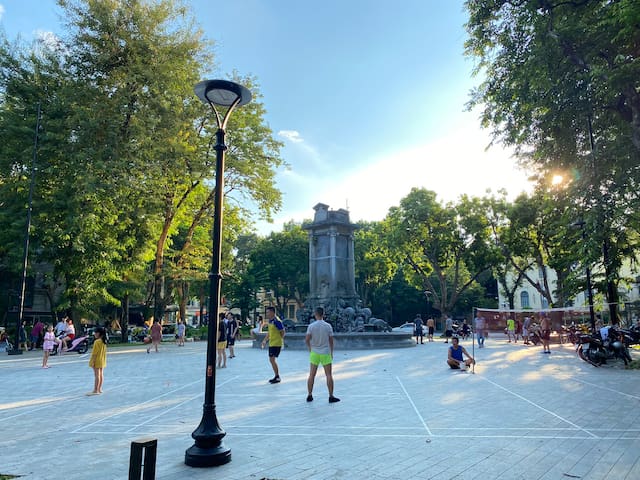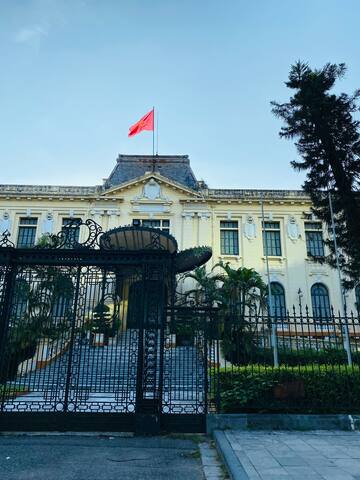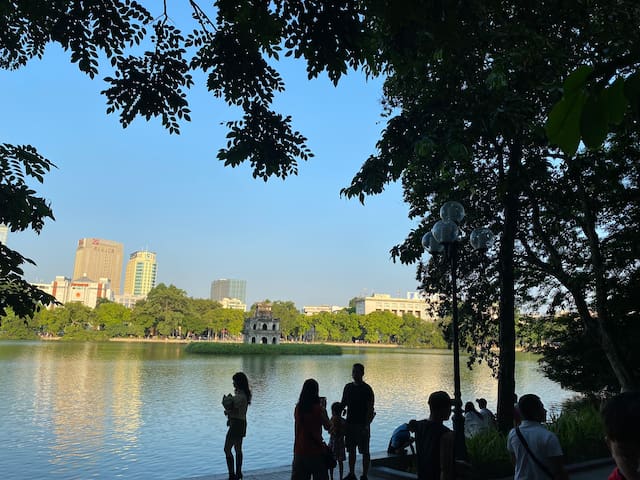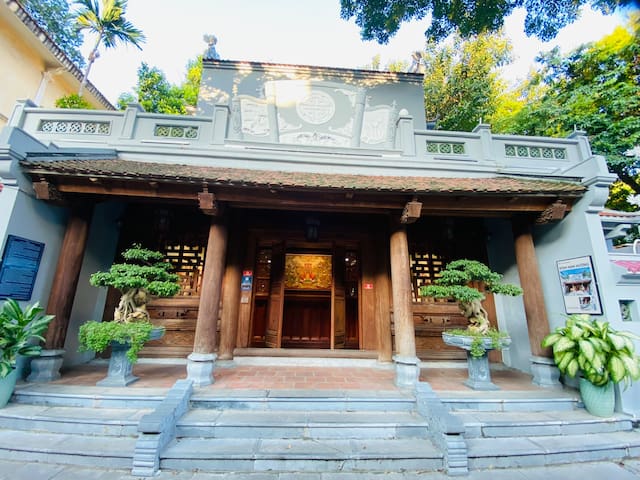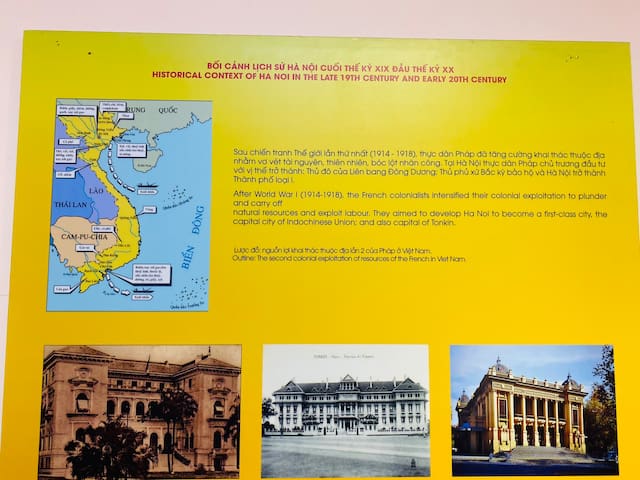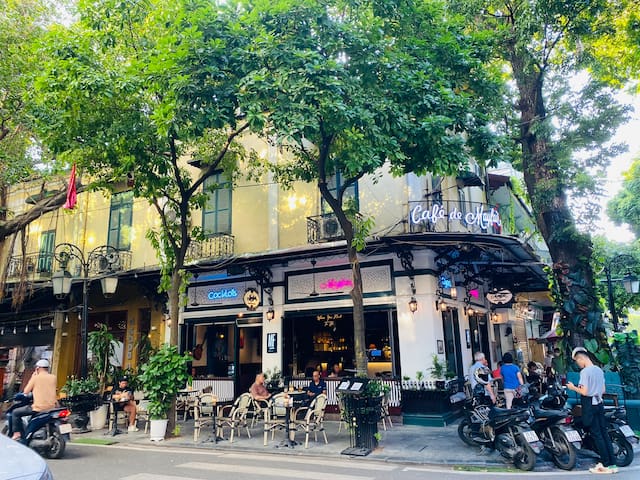Sightseeing
One of the well-known scenes spot near Hoan Kiem lake. Ancient style church. Peaceful church and beautiful architecture.
St. Joseph's Cathedral is a church on Nha Chung Street in the Hoàn Kiếm District of Hanoi, Vietnam. It is a late 19th-century Gothic Revival (Neo-Gothic style) church that serves as the cathedral of the Roman Catholic Archdiocese of Hanoi.
Construction began in 1886, with the architectural style described as resembling Notre Dame de Paris. The church was one of the first structures built by the French colonial government in Indochina when it opened in December 1886. It is the oldest church in Hanoi.
It was built on the abandoned site of Bao Thien Pagoda. After the Viet Minh took control of North Vietnam following the Geneva Accords in 1954, the Catholic Church suffered decades of persecution. Priests were arrested, and church property was seized and expropriated. St. Joseph's Cathedral was not spared and it was closed down until Christmas Eve of 1990 when Mass was permitted to be celebrated there again. Catholicism (7.4%) 7 million. During the Vietnam War, Diem’s favoritism on Christianity lead to the movement of 900.000 Catholic people to the South from the North in 1955.
209 personas del lugar lo recomiendan
Catedral de San José
40 Nhà ChungOne of the well-known scenes spot near Hoan Kiem lake. Ancient style church. Peaceful church and beautiful architecture.
St. Joseph's Cathedral is a church on Nha Chung Street in the Hoàn Kiếm District of Hanoi, Vietnam. It is a late 19th-century Gothic Revival (Neo-Gothic style) church that serves as the cathedral of the Roman Catholic Archdiocese of Hanoi.
Construction began in 1886, with the architectural style described as resembling Notre Dame de Paris. The church was one of the first structures built by the French colonial government in Indochina when it opened in December 1886. It is the oldest church in Hanoi.
It was built on the abandoned site of Bao Thien Pagoda. After the Viet Minh took control of North Vietnam following the Geneva Accords in 1954, the Catholic Church suffered decades of persecution. Priests were arrested, and church property was seized and expropriated. St. Joseph's Cathedral was not spared and it was closed down until Christmas Eve of 1990 when Mass was permitted to be celebrated there again. Catholicism (7.4%) 7 million. During the Vietnam War, Diem’s favoritism on Christianity lead to the movement of 900.000 Catholic people to the South from the North in 1955.
Lovely enclave set back from the Main Street close to the St. Joseph's Cathedral of Hanoi. This is very tranquil and the courtyards are interesting too.
Ba Da Pagoda
Số 3 Phố Nhà ThờLovely enclave set back from the Main Street close to the St. Joseph's Cathedral of Hanoi. This is very tranquil and the courtyards are interesting too.
Tràng Tiền
Tràng TiềnThe Street is in the center of the French Quarter
It's just so nice to have a walk around the lake at noon.
513 personas del lugar lo recomiendan
Lago Hoàn Kiếm
It's just so nice to have a walk around the lake at noon.
In 1888, the French destroyed the pagoda to build a post office (now the Hanoi Post Office) and the Tonkin Consul Palace (now the Government Guest House). Only Hoa Phong Tower is left behind the pagoda, now on the banks of Hoan Kiem Lake.
Hoa Phong Tower
75b Phố Đinh Tiên HoàngIn 1888, the French destroyed the pagoda to build a post office (now the Hanoi Post Office) and the Tonkin Consul Palace (now the Government Guest House). Only Hoa Phong Tower is left behind the pagoda, now on the banks of Hoan Kiem Lake.
The Hanoi Opera House (French: Opéra de Hanoï), or the Grand Opera House (Vietnamese: Nhà hát lớn Hà Nội, French: Grand Opéra) is an opera house in central Hanoi, Vietnam. It was erected by the French colonial administration between 1901 and 1911. Hanoi Opera House is one of three opera houses that the French-built during their time in Indochina, the others are Haiphong Opera House and Municipal Theatre in Ho Chi Minh city.
235 personas del lugar lo recomiendan
Teatro de la Ópera de Hanói
1 Tràng TiềnThe Hanoi Opera House (French: Opéra de Hanoï), or the Grand Opera House (Vietnamese: Nhà hát lớn Hà Nội, French: Grand Opéra) is an opera house in central Hanoi, Vietnam. It was erected by the French colonial administration between 1901 and 1911. Hanoi Opera House is one of three opera houses that the French-built during their time in Indochina, the others are Haiphong Opera House and Municipal Theatre in Ho Chi Minh city.
This is a very nice place to walk around at noon. There is a very interesting story about the French Vice Governor that he died in the late 19th century and they build a small park with a fountain to honor him.
Vườn hoa con Cóc
Phố Ngô QuyềnThis is a very nice place to walk around at noon. There is a very interesting story about the French Vice Governor that he died in the late 19th century and they build a small park with a fountain to honor him.
hroughout its history, the university has had several name changes: the University of Indochina (Université Indochinoise, 東洋大學 or Đại học Đông Dương; established in 1906), Vietnam National University (Trường Đại học Quốc gia Việt Nam; November 1945), and the University of Hanoi (Trường Đại học Tổng hợp Hà Nội; June 1956). In 1993, Vietnam National University, Hanoi (Đại học Quốc gia Hà Nội) was created by merging the University of Hanoi, Hanoi National University of Education (HNUE) and College of Foreign Languages.
Hanoi University of Pharmacy
13-15 Lê Thánh Tônghroughout its history, the university has had several name changes: the University of Indochina (Université Indochinoise, 東洋大學 or Đại học Đông Dương; established in 1906), Vietnam National University (Trường Đại học Quốc gia Việt Nam; November 1945), and the University of Hanoi (Trường Đại học Tổng hợp Hà Nội; June 1956). In 1993, Vietnam National University, Hanoi (Đại học Quốc gia Hà Nội) was created by merging the University of Hanoi, Hanoi National University of Education (HNUE) and College of Foreign Languages.
Sofitel Legend Metropole Hanoi is a five-star historic luxury hotel, opened in 1901 as Grand Métropole Hotel in Hanoi, the capital of Vietnam. It is today one of the most important buildings of Vietnam in French colonial style. The hotel today has 364 rooms.
In 1964, with American air raids imminent, the management decides to construct a bomb shelter in the courtyard of the hotel to protect guests. It has a 1m thick concrete ceiling and could accommodate 30 – 40 people. During that time the hotel staff received a military training course.
The hotel was also used as a venue for the second meeting between US President Donald Trump and North Korean Supreme Leader Kim Jong Un on 27 and 28 February 2019.
31 personas del lugar lo recomiendan
Sofitel Legend Metropole Hanoi
15 P. Ngô QuyềnSofitel Legend Metropole Hanoi is a five-star historic luxury hotel, opened in 1901 as Grand Métropole Hotel in Hanoi, the capital of Vietnam. It is today one of the most important buildings of Vietnam in French colonial style. The hotel today has 364 rooms.
In 1964, with American air raids imminent, the management decides to construct a bomb shelter in the courtyard of the hotel to protect guests. It has a 1m thick concrete ceiling and could accommodate 30 – 40 people. During that time the hotel staff received a military training course.
The hotel was also used as a venue for the second meeting between US President Donald Trump and North Korean Supreme Leader Kim Jong Un on 27 and 28 February 2019.
It is a historical place to learn about Hanoi's hardship in the past and how the people stayed resilient and never gave up no matter how difficult it was to reclaim their country. It gives us a glimpse of French colonialism and the Vietnam war with the US( Or the American War as it's called in Vietnam). Nice to have the audio guide with 100,000 vnd for detail sharing (it's 50,000 vnd if it is in Vietnamese). Alternative, you can read the summary on the wall.
212 personas del lugar lo recomiendan
Prisión de Hoa Lo
1 Hoả LòIt is a historical place to learn about Hanoi's hardship in the past and how the people stayed resilient and never gave up no matter how difficult it was to reclaim their country. It gives us a glimpse of French colonialism and the Vietnam war with the US( Or the American War as it's called in Vietnam). Nice to have the audio guide with 100,000 vnd for detail sharing (it's 50,000 vnd if it is in Vietnamese). Alternative, you can read the summary on the wall.
Central Medical Association, a building that has very interesting architecture.
Trung Ương Hội Đông Y Việt Nam
19 Phố Tông ĐảnCentral Medical Association, a building that has very interesting architecture.
This is a great place for people who love hidden bookstores. It's located on Dinh Le, a busy street, but you can find a small lane to reach this special bookshop. Inside, you'll find old books in Vietnamese and English.
Sách mụ Hoa
This is a great place for people who love hidden bookstores. It's located on Dinh Le, a busy street, but you can find a small lane to reach this special bookshop. Inside, you'll find old books in Vietnamese and English.
Built on the site of Bao An pagoda between 1893-1899, the Hanoi Post Office is a French colonial building with a bright yellow facade and a large rooftop clock. It was badly damaged during the resistance war but is still a hub of Vietnam's parcel post service. Nowadays, it's a great spot to admire colonial French architecture and mail postcards.
Hanoi Post Office
Built on the site of Bao An pagoda between 1893-1899, the Hanoi Post Office is a French colonial building with a bright yellow facade and a large rooftop clock. It was badly damaged during the resistance war but is still a hub of Vietnam's parcel post service. Nowadays, it's a great spot to admire colonial French architecture and mail postcards.
A local market located 10 minutes away from the Hoan Kiem lake with many silk products and veggies.
Chợ Hôm - Đức Viên
A local market located 10 minutes away from the Hoan Kiem lake with many silk products and veggies.
Trang Tien Plaza is Vietnam's first and only luxury shopping center, offering more than 200 fashion brands, cosmetics, handbags, footwear, and accessories. It features over 50 leading international brands, including most of the top 10 brands in the fashion world such as Burberry, Cartier, Louis Vuitton, and Rolex. In addition to retail shops, the plaza also provides over 215,000 square feet (20,000 square meters) of space for offices, coffee shops, and food outlets.
100 personas del lugar lo recomiendan
Trang Tien Plaza
24 Hai Bà TrưngTrang Tien Plaza is Vietnam's first and only luxury shopping center, offering more than 200 fashion brands, cosmetics, handbags, footwear, and accessories. It features over 50 leading international brands, including most of the top 10 brands in the fashion world such as Burberry, Cartier, Louis Vuitton, and Rolex. In addition to retail shops, the plaza also provides over 215,000 square feet (20,000 square meters) of space for offices, coffee shops, and food outlets.
Vườn hoa con Cóc
Phố Ngô Quyềnthe garden with many sport activities in the afternoon.
The State Bank of Vietnam building was previously the Hanoi branch of the Bank for Indochina, founded in 1875 in Paris to issue currency for French colonies in Asia. The building's facade features oriental seal and octagonal patterns, commonly seen in Vietnamese communal houses and pagodas. The bank's branches in Hai Phong and Saigon also have unique French architecture.
State Bank of Vietnam
The State Bank of Vietnam building was previously the Hanoi branch of the Bank for Indochina, founded in 1875 in Paris to issue currency for French colonies in Asia. The building's facade features oriental seal and octagonal patterns, commonly seen in Vietnamese communal houses and pagodas. The bank's branches in Hai Phong and Saigon also have unique French architecture.
This small and free museum features friendly staff who can speak English well. They can guide you through displays that cover the history of the Vietnamese police force from French colonial times to present day. You can also explore the museum on your own, as the signage is informative. The displays cover a variety of topics, including costumes, drug smuggling, fake goods, kidnappings, and scam rings, providing a broader picture of Vietnam's society throughout history.
Hanoi Police Museum
67 Phố Lý Thường KiệtThis small and free museum features friendly staff who can speak English well. They can guide you through displays that cover the history of the Vietnamese police force from French colonial times to present day. You can also explore the museum on your own, as the signage is informative. The displays cover a variety of topics, including costumes, drug smuggling, fake goods, kidnappings, and scam rings, providing a broader picture of Vietnam's society throughout history.
This beautiful house, constructed in 1918, previously served as the residence of the Governor of Tonkin. The architect Adolphe Bussy designed the house in the French classical architectural style. Renamed Tonkin Palace during the first and second Indochina Wars, the building witnessed numerous historic events and served as the workplace of President Ho Chi Minh in 1945. The building is located near the stunning Vuon Hoa Con Coc park.
Government Guest House (Tonkin Palace)
This beautiful house, constructed in 1918, previously served as the residence of the Governor of Tonkin. The architect Adolphe Bussy designed the house in the French classical architectural style. Renamed Tonkin Palace during the first and second Indochina Wars, the building witnessed numerous historic events and served as the workplace of President Ho Chi Minh in 1945. The building is located near the stunning Vuon Hoa Con Coc park.
Every spring, people in Hanoi visit Ly Quoc Su Pagoda to wish for good fortune, happiness, and prosperity in the coming year. The pagoda is not only a place of worship, but also a symbol of the city's rich cultural heritage and history. Visitors come to gain a deeper understanding of its significance, learn about customs and traditions, and appreciate the beauty of its architecture and design. The Ly Quoc Su Pagoda is a place of awe and wonder, a testament to the enduring spirit of the people of Hanoi.
Ly Trieu Quoc Su Pagoda
Every spring, people in Hanoi visit Ly Quoc Su Pagoda to wish for good fortune, happiness, and prosperity in the coming year. The pagoda is not only a place of worship, but also a symbol of the city's rich cultural heritage and history. Visitors come to gain a deeper understanding of its significance, learn about customs and traditions, and appreciate the beauty of its architecture and design. The Ly Quoc Su Pagoda is a place of awe and wonder, a testament to the enduring spirit of the people of Hanoi.
This area is very chill for a walk. It can be be quite busy on the weekends.
Bệnh Viện Mắt Trung Ương
This area is very chill for a walk. It can be be quite busy on the weekends.
This is a quite cummunal house right next to the Hoan Kiem lake, on Hang Trong street. There is a statue of King Le Loi.
Đình Nam Hương
This is a quite cummunal house right next to the Hoan Kiem lake, on Hang Trong street. There is a statue of King Le Loi.
5 P.Hàm Long
House No. 5D Ham Long Street - Where the first Communist Party Office was established
Food scene
This lovely café shop in Hanoi offers a unique coffee taste of cinnamon. The building, constructed in the 1930s, boasts a French-style architecture.
Loading T café
This lovely café shop in Hanoi offers a unique coffee taste of cinnamon. The building, constructed in the 1930s, boasts a French-style architecture.
Neighborhoods
The French Quarter in Hanoi is located in the south-east of Hoan Kiem Lake. It was established by French occupiers in the late 19th century, leaving behind many French buildings in this area. It's not as famous as the Old Quarter, but has unique architecture and a range of food and drinks. There are also many yellow houses and Parisian-style streets. The French Quarter is considered the most luxurious corner of Hanoi, with 5-star hotels, high-end restaurants, elegant coffee shops, bookstores, boutiques, and galleries. It is also the center for embassies, government buildings, and wealthy neighborhoods.
French Quarter
The French Quarter in Hanoi is located in the south-east of Hoan Kiem Lake. It was established by French occupiers in the late 19th century, leaving behind many French buildings in this area. It's not as famous as the Old Quarter, but has unique architecture and a range of food and drinks. There are also many yellow houses and Parisian-style streets. The French Quarter is considered the most luxurious corner of Hanoi, with 5-star hotels, high-end restaurants, elegant coffee shops, bookstores, boutiques, and galleries. It is also the center for embassies, government buildings, and wealthy neighborhoods.
Consejos sobre la ciudad
Reservá antes de viajar...
Overview of French Quarter Hanoi
The French Quarter in Hanoi is located in the south-east of Hoan Kiem Lake. It was established by French occupiers in the late 19th century, leaving behind many French buildings in this area. It’s not as famous as the Old Quarter, but has unique architecture and a range of food and drinks. There are also many yellow houses and Parisian-style streets. The French Quarter is considered the most luxurious corner of Hanoi, with 5-star hotels, high-end restaurants, elegant coffee shops, bookstores, boutiques, and galleries.

